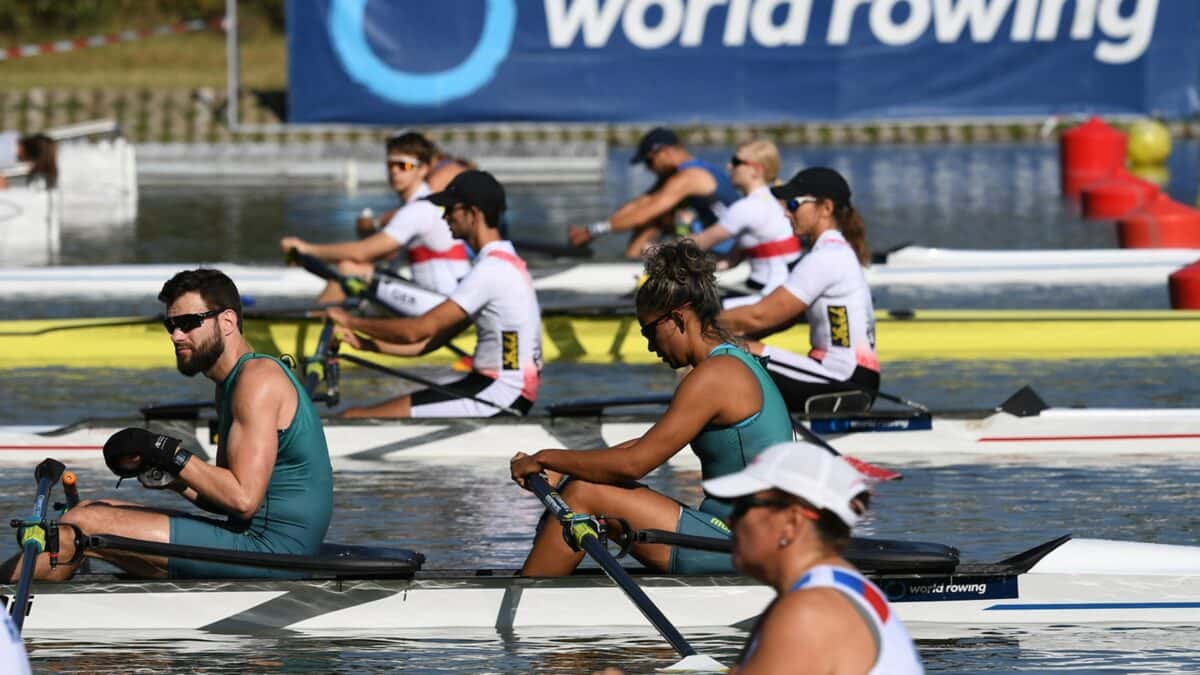
23 Jul 2020
The ongoing progression of para rowing
These changes have been the continued effort of nearly a century of advocacy for rowing for people with disabilities. To celebrate Olympic and Paralympic month, World Rowing dives into the history of para rowing.
The earliest mention of rowing for people with disabilities was in 1913 at the Worcester College for the Blind in Great Britain. The school had been established in 1866 for pupils with visual impairments. Nearly 50 years later a progressive headmaster, George Clifford Brown decided to open a boathouse. Brown figured that visual impaired students could row in a coxed boat with a sighted coxswain and compete on an equal level with fully-sighted peers. In 1927, Worcester College for the Blind entered an eight to compete at the Thames Challenge Cup.
The timing coincided with the return of blind soldiers to Great Britain after World War I. Rehabilitation houses were opened to help soldiers adjust to their new reality. St. Dunstan’s Hostel for Blinded Soldiers facilitated training in physiotherapy, shorthand typing, telephone operating, braille and more. Sport was key to their programme and soldiers rowed on Regent’s Park Lake. In 1922, they held the Blind Oarsmen Regatta, a competition between soldiers from St. Dunstan’s and Worcester College for the Blind.
Para rowing continued in Great Britain throughout the 1920s and 1930s, making the jump across the Atlantic to the United States in 1945. Blinded soldiers returning from World War II entered the Blind Veterans Regatta, in which teams from the Army, Navy and Marines competed. The event was held in Philadelphia on the Schuylkill River and set the next phase of para rowing in motion.
Between 1945 and 1980 efforts were made around the world to include people with disabilities in the sport of rowing. Then-called ‘adaptive’ rowing programmes were established in Australia, France, Great Britain, Germany, the Netherlands and the United States. In 1980, Chris Blackwall, the Executive Director of US Rowing, started the first rowing club for people with disabilities in Philadelphia.
These efforts led to the first-ever FISA recognised ‘adaptive rowing’ World Cup in 1991 in the Netherlands. This was followed by various FISA events hosting adaptive rowing competitions. The sport began to grow.
Current Para Rowing Commission Chair Fay Ho says there were many efforts from pioneers who advocated athletes in para rowing. “I can remember when I raced at the 1993 World Championships as a lightweight in Racice, Czech Republic, and para rowing events were included there,” says Ho.
The Adaptive Rowing Commission (now Para Rowing Commission) was formed in 2001 to try to establish a classification system and work toward Paralympic accreditation. It also oversaw para rowing included in the 2002 World Rowing Championships.
“The most memorable moment was being informed in 2005 that para rowing would be offered for the first time at the 2008 Paralympic Games,” Ho recounts.
The inclusion of rowing at the Paralympic Games meant increased support for many National Federations in their efforts to build the sport in their countries and subsequently more countries establishing para rowing programmes. By the 2016 Olympic Games in Rio, there were 26 countries competing in para rowing, with 48 boats and 96 athletes.
The next best moment for Ho was then the progression of para rowing from the 1000m distance to 2000m, which happened for the first time in 2017. “This confirms that rowing is an endurance sport and we welcome para rowers to race within an integrated programme,” Ho says.
“Our inclusive policy welcomes all rowers with or without disability. We believe through sports, we can enhance the rehabilitation process and further provide a podium for para rowers to take up challenges for a better understand their own ability rather than disability. This can significantly help to rebuild self-confidence and create a harmonious society,” Ho says.
The fourth edition of rowing at the Paralympic Games is set to take place, over 2000m, in 2021 in Tokyo, Japan.

